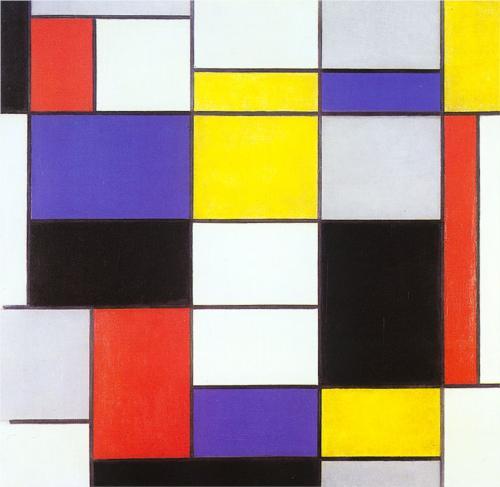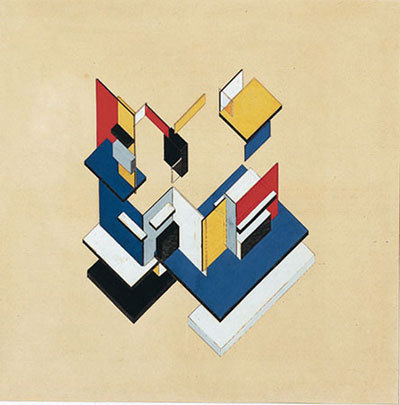CALDER: A 3-D MONDRIAN?
The October 18
th
lecture on “Plastic Expression in 2-D” and Piet Mondrian’s founding of the “de stijl” movement was astonishing for the fact that there is a clear and direct progression of neoplasticism from 2-D representations to 3-D built forms.

Architecture always seems to be a step behind art. A concept or idea is can be quickly realized on a blank canvas while architecture requires representations requiring realization in a physical built environment to then only be recognized by a culture.
I never realized Mondrian’s compositions to be so highly influential and by taking a closer look at the visual and theoretical characteristics of neoplastic ideals, their resemblance that of Alexander Calder’s dawned on me. With further research, I discovered that Calder’s abstract sculptures were in fact influenced by a visit to Mondrian’s studio in 1930.
In Theo Von Doesburg’s
Towards a Plastic Architecture
, he spoke about incorporating the fourth dimension of time, balanced relationship of unequal parts, and the importance of an all-sided development.

Alexander Calder did incorporate the fourth dimension by taking advantage of the natural currents in a room, his mobiles were contingent and continually transforming. The suspended elements literally exhibited a “balanced relationship of unequal parts” with abstract shapes composed into equilibrium.
Most importantly, Mondrian’s compositions were reduced to the most elementary and formal through the basics in geometry and color in a black framework. Similarly, Calder made use of the most primary in colors (red, blue, and yellow) and basic in shape (circle, triangle, sphere, and prism) arranged on a series of black steel wires.

